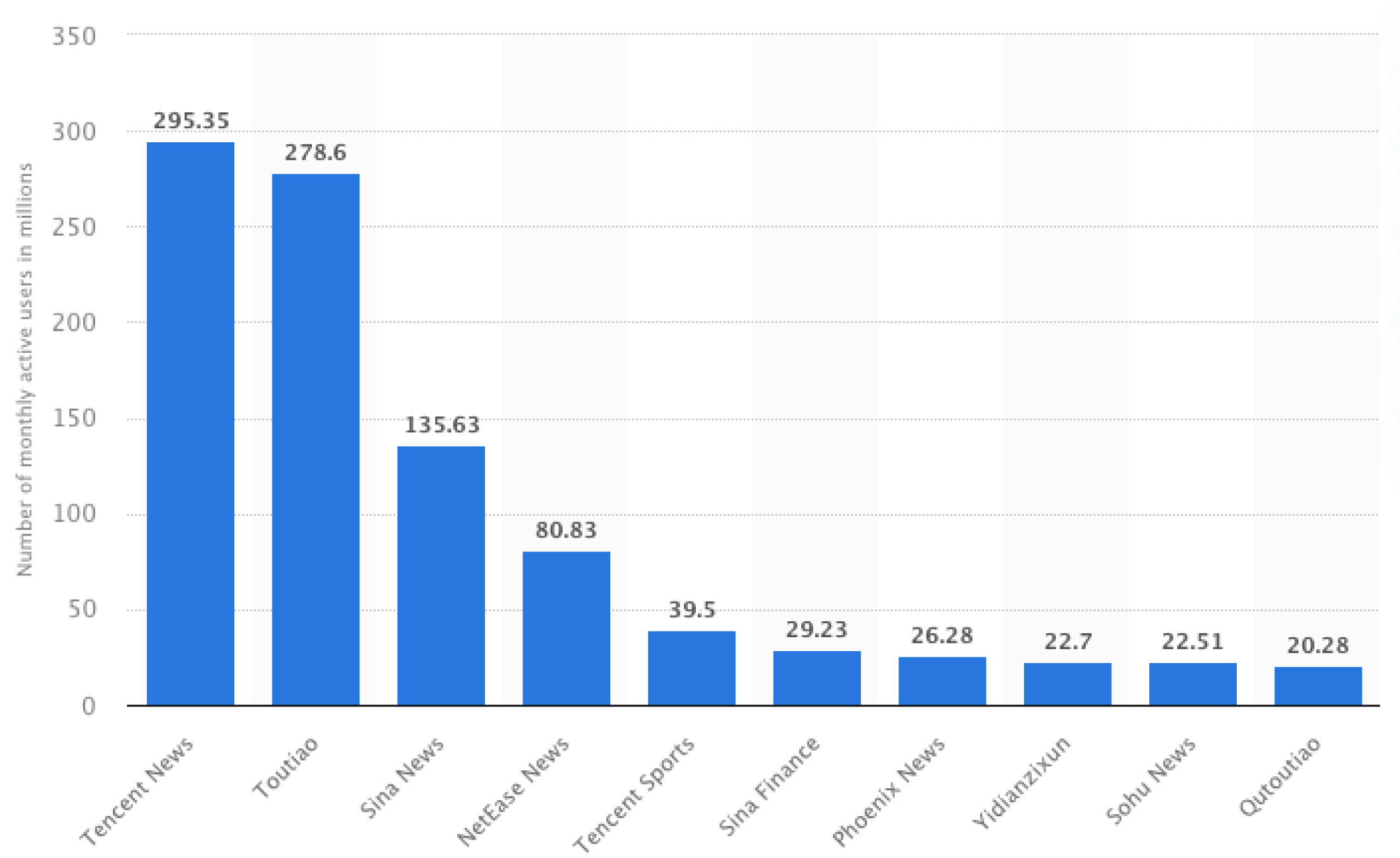1000/1000
Hot
Most Recent

News aggregation platforms are services that pull together online content such as news and videos in one place for ease of viewing on mobile devices or websites.
Currently, news aggregation platforms have become the primary way for users to obtain information. In China, the news aggregation platforms represented by Toutiao and Tencent News rely on big data technology and recommendation algorithms to increase user stickiness by meeting the personalized needs of users, making them to gradually become media platforms with strong competitiveness. At the end of 2020, the news aggregation platform has more than 600 million active monthly users, and the penetration rate of the entire network is close to 80%. Among them, top platforms such as Toutiao and Tencent News maintain their dominant positions and can reach levels of billions MAU (Figure 1). The most significant advantages of news aggregation platforms are that they are able to achieve precise matches between users and information. Combined with the overwhelming advantage of current news aggregation platforms in the information dissemination process, these platforms determine the meaning of information, the flow of information, and the audience’s response to a certain extent. The function of information is to provide a basis for personal decision-making and judgment. Therefore, news aggregation platforms have a profound impact on user value judgments and daily behavior decisions.

Figure 1. Number of monthly active users (MAU) of leading news aggregation platforms in China in December 2020 [1].